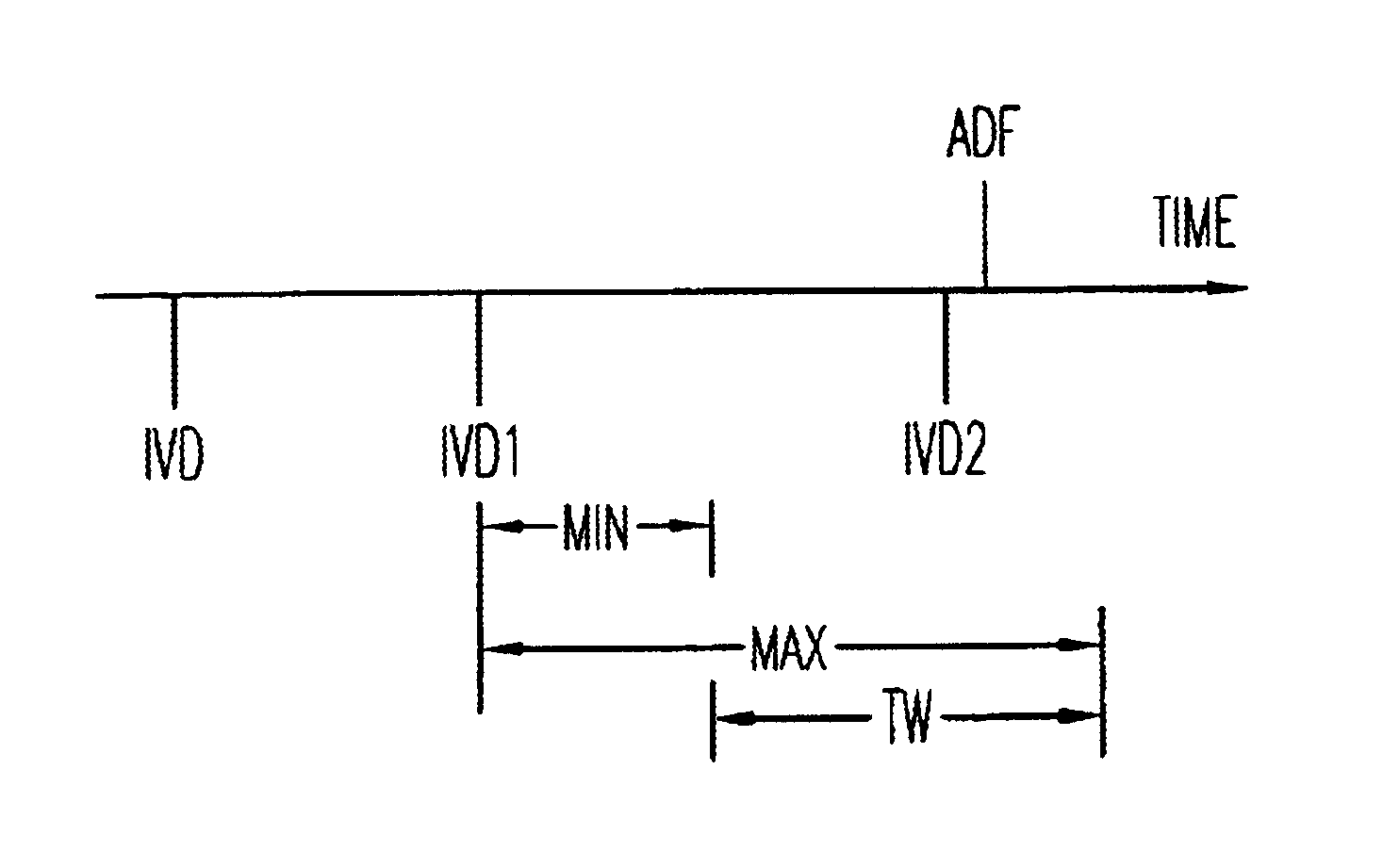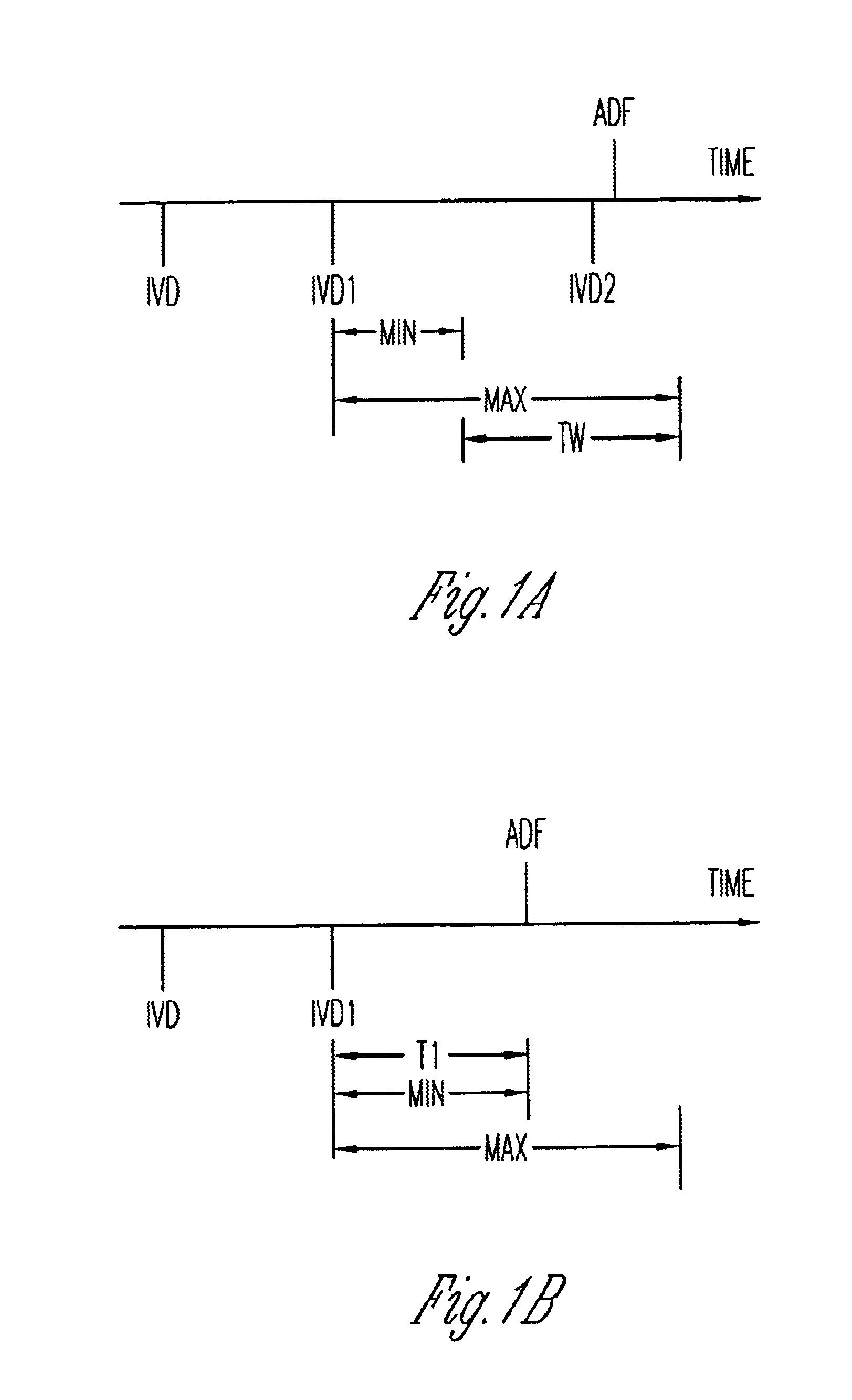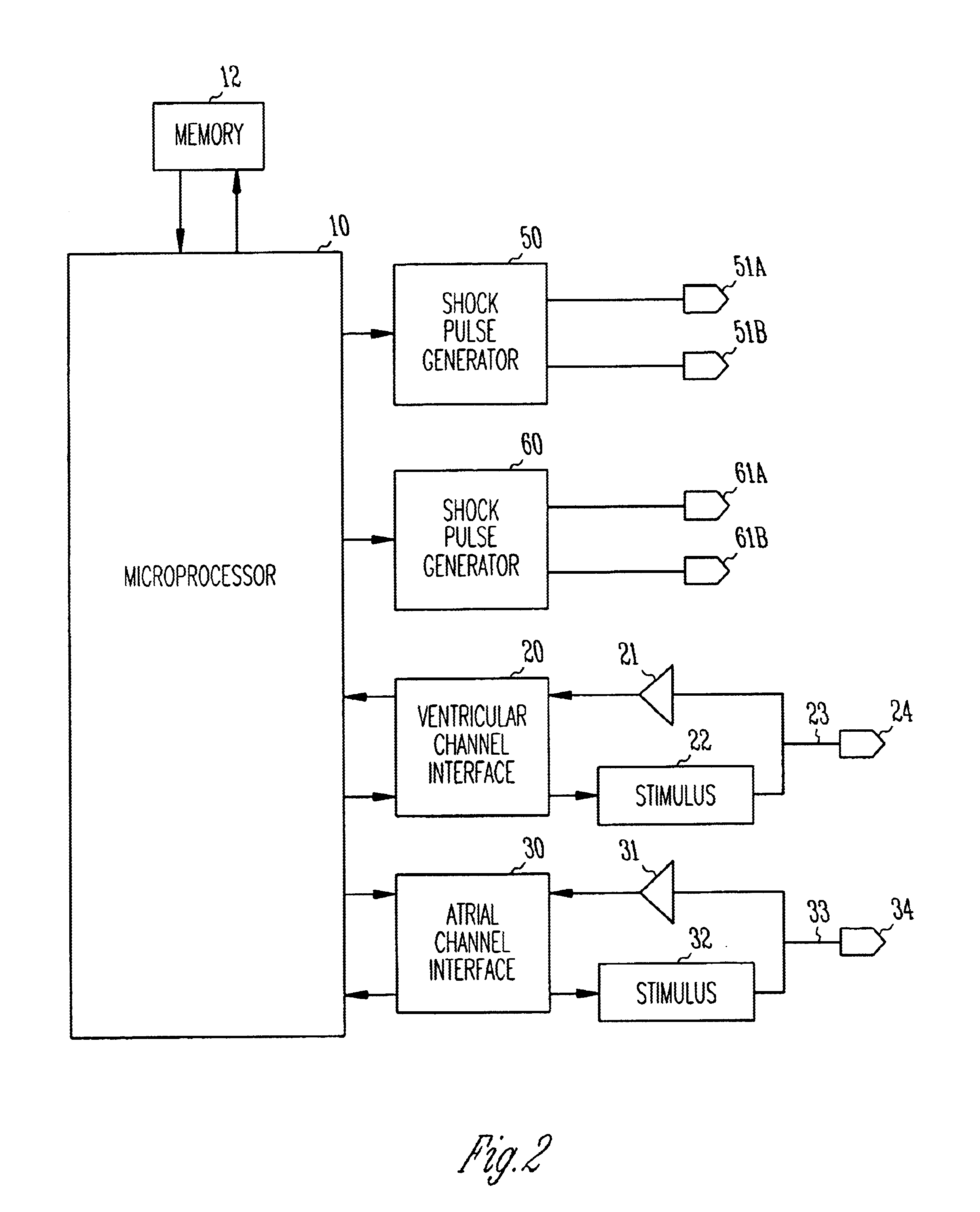Method and apparatus for reducing early recurrence of atrial fibrillation with defibrillation shock therapy
a shock therapy and atrial fibrillation technology, applied in the field of atrial tachyarrhythmia treatment methods, can solve the problems of ventricular fibrillation, dyspnea, fatigue, vertigo and angina, and much worse conditions
- Summary
- Abstract
- Description
- Claims
- Application Information
AI Technical Summary
Benefits of technology
Problems solved by technology
Method used
Image
Examples
Embodiment Construction
The present invention is a method and apparatus for delivering atrial defibrillation shock therapy. As used herein, atrial defibrillation shock therapy should be taken to mean shock therapy for treating any atrial tachyarrhythmia, such as atrial flutter, as well as atrial fibrillation.
In order to avoid the possible induction of ventricular fibrillation, atrial defibrillation shocks are usually delivered synchronously with a sensed R wave and after a minimum pre-shock R—R interval. (The R—R interval is the time between the immediately preceding R wave and the presently sensed R wave, and an R wave may be regarded as either a spontaneously occurring depolarization or a ventricular pace.) This is done because the ventricle is especially vulnerable to induction of fibrillation by a depolarizing shock delivered at a time too near the end of the preceding ventricular contraction (i.e., close to the T wave on an EKG). Delivering the shock synchronously with a sensed R wave thus moves the s...
PUM
 Login to View More
Login to View More Abstract
Description
Claims
Application Information
 Login to View More
Login to View More - R&D
- Intellectual Property
- Life Sciences
- Materials
- Tech Scout
- Unparalleled Data Quality
- Higher Quality Content
- 60% Fewer Hallucinations
Browse by: Latest US Patents, China's latest patents, Technical Efficacy Thesaurus, Application Domain, Technology Topic, Popular Technical Reports.
© 2025 PatSnap. All rights reserved.Legal|Privacy policy|Modern Slavery Act Transparency Statement|Sitemap|About US| Contact US: help@patsnap.com



